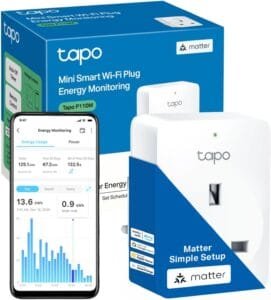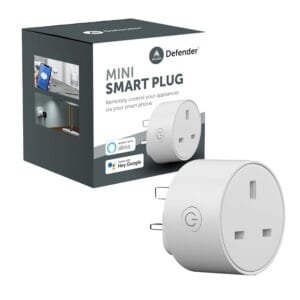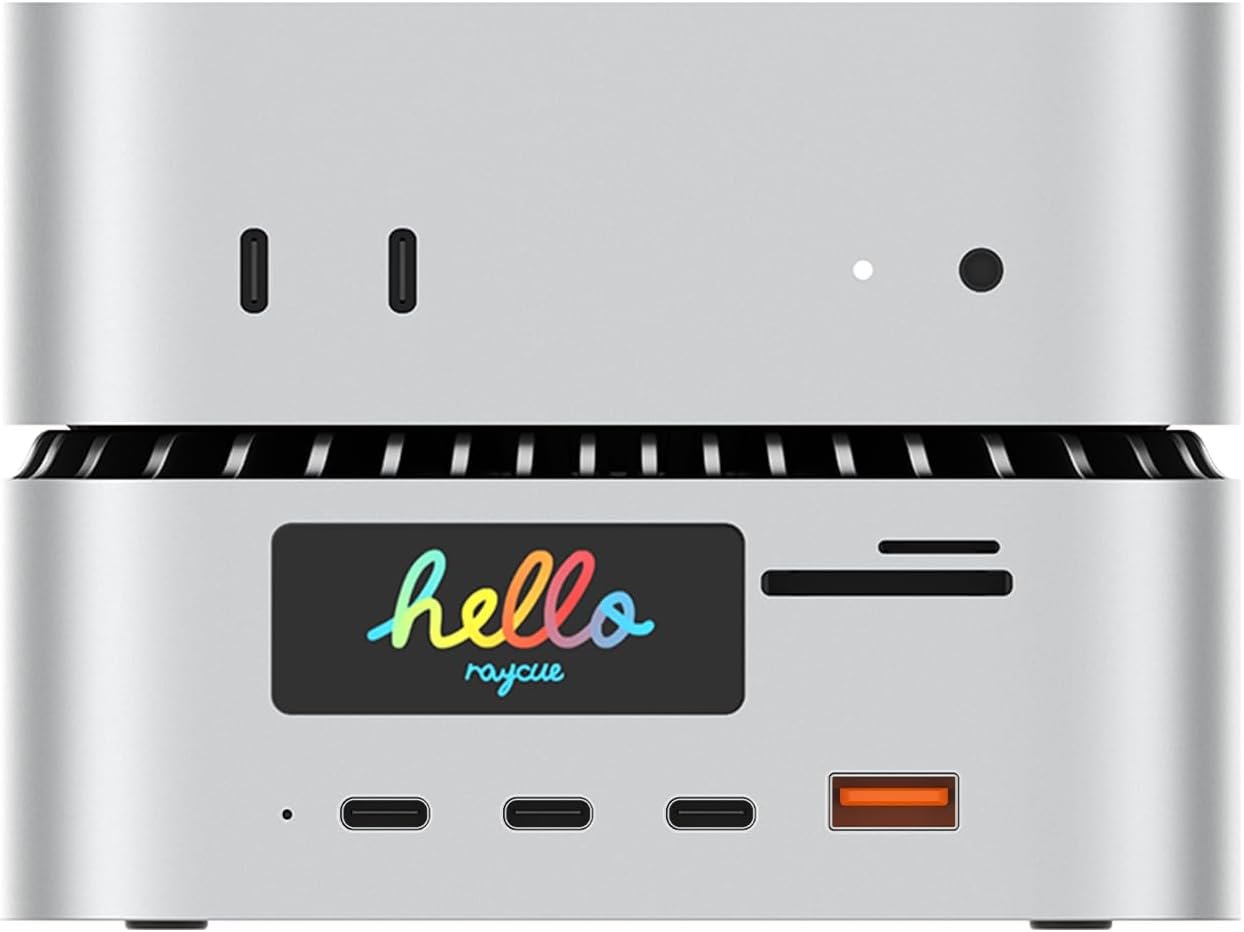Introduction to Smart Plugs
Smart plugs are innovative devices that provide a seamless way to integrate traditional electrical outlets with modern smart home technology. Essentially, a smart plug is an adapter that fits into a standard wall outlet and enables users to control the power supply to connected devices. By adding smart plugs to your home, you can effortlessly transform ordinary appliances into smart devices that can be monitored and managed remotely.
The primary functionality of smart plugs revolves around enabling remote access to power control. Through a dedicated smartphone application, users can turn devices on or off from anywhere, whether they are at home or on the go. This convenient feature allows for greater flexibility in managing household energy consumption, ensuring that devices are not left running when they are not in use. Furthermore, many smart plugs are compatible with voice assistants, such as Amazon Alexa or Google Assistant, enabling users to control their devices through simple voice commands.
An essential aspect of smart plugs is their role as a bridge in smart home ecosystems. By connecting to the home Wi-Fi network, they facilitate communication between devices and empower users to create automation routines that enhance their living spaces. For example, you can schedule a smart plug to turn on a lamp at sunset, ensuring a well-lit home upon arrival. With their user-friendly design and relatively low cost, smart plugs serve as an excellent entry point for individuals looking to adopt smart home technology without significant investment or extensive setup.
In summary, smart plugs represent a practical solution for integrating smart technology into everyday appliances, allowing homeowners to control their energy usage and enhance convenience within their living spaces.
How Smart Plugs Work
Smart plugs operate through a combination of Wi-Fi connectivity and mobile application interfaces, allowing users to control their electrical devices remotely. When connected to a home’s wireless network, smart plugs enable communication between the plug and the user’s smartphone or tablet through dedicated applications. These applications serve as the primary control hub, providing functionalities such as switching devices on and off, setting timers, and scheduling operations, which significantly enhance convenience and energy management.
Integration with smart home platforms such as Amazon Alexa or Google Assistant further extends the functionality of smart plugs. By linking smart plugs to these voice-activated assistants, users can issue voice commands to control connected devices. For instance, one can easily say, “Turn on the coffee maker,” and the corresponding smart plug will activate the appliance without the need for manual intervention. This seamless interaction is crucial for those embracing a fully automated smart home environment.
Furthermore, smart plugs often feature energy monitoring capabilities. This allows users to track and manage their energy usage through the mobile app, providing insights into which devices consume more power. With this information, consumers can make informed decisions about their usage patterns, potentially leading to reduced energy bills and a more eco-friendly home. Additionally, the scheduling feature allows users to automate the operation times of their connected devices, tailoring the usage based on daily routines or preferences.
Overall, the operational mechanisms behind smart plugs not only simplify daily tasks but also contribute to efficient energy consumption and integration within broader home automation systems. By understanding how these devices work, users can leverage their full potential, creating a smarter and more sustainable living environment.
Are There Security Risks?
With the growing popularity of smart plugs, it is important to consider the associated security vulnerabilities that can arise. Smart plugs, while enhancing convenience and efficiency, can expose users to risks such as unauthorized access and data breaches. The primary concern revolves around the potential for hackers to gain control over smart devices within a home network. This unauthorized access can lead to not only inconvenience but also significant security challenges. For instance, if a hacker can manipulate the settings of a smart plug, they may be able to turn appliances on or off at will, or, in the worst-case scenario, exploit this access to launch further attacks on home networks.
To mitigate these risks, users should implement best practices for securing their smart home networks. One important step is to change default usernames and passwords immediately after installation. Many devices, including smart plugs, come with easily guessable default credentials that can be exploited by cybercriminals. Additionally, enabling network encryption, such as WPA3, provides an extra layer of protection against unauthorized access.
Data privacy is another crucial concern. Smart plugs can collect usage data, and without adequate safeguards, this information could potentially be accessed by unauthorized parties. Therefore, one should ensure that the manufacturer employs robust privacy policies and data protection measures. Always review the privacy settings in the associated app and limit data sharing as necessary.
Furthermore, keeping firmware updated on smart plugs and other smart devices is critical. Manufacturers often release updates that address security vulnerabilities and bugs. Ensuring that these updates are applied promptly can help prevent hackers from exploiting known weaknesses. In conclusion, while smart plugs offer significant benefits for energy management and convenience, being aware of the potential security risks and taking proactive measures is essential for maintaining a secure smart home environment.
Types of Smart Plugs Available
Smart plugs are increasingly popular devices that enable users to control their electrical appliances remotely, thereby enhancing convenience and energy efficiency within homes. In the market, various types of smart plugs are available, each designed with unique features and functionalities to cater to different user needs.
One of the most common varieties is the Wi-Fi-enabled smart plug. These plugs connect to a home’s wireless network, allowing users to manage devices via a smartphone app or voice commands through virtual assistants, such as Amazon Alexa and Google Assistant. The primary advantage of Wi-Fi plugs lies in their ability to facilitate remote access from anywhere, provided there’s an internet connection.
Another type is the Bluetooth smart plug, which connects directly to smartphones or tablets. Unlike their Wi-Fi counterparts, Bluetooth smart plugs work within a shorter range and do not necessitate a home network. While they may not offer as much flexibility as Wi-Fi plugs, they are suitable for users who prefer direct control without involving internet-based services.
Energy-monitoring plugs are another noteworthy category, equipped with the capability to track and report the electricity consumption of connected devices. These smart plugs provide insights into real-time energy usage, helping users identify high-energy appliances and potentially leading to more energy-efficient habits.
Lastly, some smart plugs come with built-in timers that allow users to schedule when appliances turn on or off. This feature is particularly useful for managing devices like lamps or heaters, providing automation for daily routines. These programmable smart plugs enhance energy management by ensuring that devices are not left on unnecessarily.
In conclusion, consumers can choose from a variety of smart plugs, each offering distinct characteristics tailored to specific needs. Understanding the various types available empowers homeowners to select the best solution for improving the efficiency and convenience of their home electrical systems.
Compatibility with Voice Assistants
The integration of smart plugs with popular voice assistants such as Amazon Alexa, Google Assistant, and Apple HomeKit has significantly enhanced the user experience in smart home management. These devices allow users to control their appliances through simple voice commands, offering a layer of convenience that traditional plugs cannot provide. As smart homes continue to evolve, compatibility with these voice assistants is a vital factor for consumers looking to create a cohesive smart home ecosystem.
Smart plugs that are compatible with Amazon Alexa can be seamlessly controlled by issuing commands like “Alexa, turn on the living room lamp” or “Alexa, schedule the coffee maker.” This interaction not only simplifies daily tasks but also enables hands-free operation, which is particularly useful when multitasking or when one’s hands are occupied. The voice recognition technology utilized by Alexa ensures that commands are executed promptly, making the management of connected devices efficient.
Similarly, integration with Google Assistant allows users to issue commands through phrases like “Hey Google, turn off the fan,” thus further streamlining the control process of household devices. Google Assistant users can also create routines that involve multiple smart plugs, turning various devices on or off simultaneously with a single command. This capability enhances operational efficiency and provides the flexibility that many users desire in a smart home environment.
For Apple HomeKit users, the compatibility of smart plugs with Siri brings a level of personalized control to home automation. The secure HomeKit framework enables users to configure their smart plugs within the Home app and manage them using Siri on compatible Apple devices. This seamless integration promotes a more interconnected experience across one’s smart home components.
The ability to utilize voice commands to manage smart plugs not only enhances user convenience but also makes smart home technology accessible to a broader audience, including those who may not be as tech-savvy. By embracing voice assistant compatibility, smart plugs become an integral part of a smart home system, promoting energy efficiency and improving overall lifestyle quality.
Smart Plug Applications in Different Settings
Smart plugs present a versatile solution for enhancing convenience and energy efficiency across various settings in modern homes. One of the most common applications involves lighting control. By using smart plugs with lamps, homeowners can automate lighting schedules. For instance, programming the lights to turn on at sunset and off at a designated time can not only create a welcoming atmosphere but also serve as a practical security measure, giving the impression that someone is home during the evening. This functionality allows users to tailor their home environment according to their daily routines.
Another significant application is the remote control of appliances. Smart plugs enable users to operate devices from anywhere, which is particularly beneficial for managing energy consumption. For example, one can turn off appliances left on accidentally, such as irons or kitchen gadgets, directly from a smartphone app. This feature not only promotes safety but also contributes to reducing electricity bills, making it an essential aspect of energy management in the household.
Moreover, smart plugs can integrate seamlessly with other smart home devices, enhancing overall convenience. For instance, users can synchronize their plugs with motion sensors or smart home hubs to create automated scenarios. When motion is detected, certain lights can turn on, or when a homeowner leaves the house, the system can automatically power down electronics connected via smart plugs. This capability illustrates the real potential of smart plugs in home automation, providing a user-friendly interface that simplifies the management of multiple devices while promoting energy conservation.
In different settings, such as offices or workshops, smart plugs can also facilitate productivity. They can control equipment such as printers or coffee machines, providing users with the ability to set schedules to ensure these devices operate during specified hours. This integration significantly contributes to optimizing energy use while maintaining a streamlined workflow, thus embodying the essence of a smarter, more efficient living and working environment.
Availability of Smart Plugs in Different Countries
Smart plugs have rapidly gained popularity as an essential element in the smart home technology landscape, thanks to their ability to enhance convenience and energy efficiency. Their availability, however, varies significantly across different countries due to factors such as regulatory standards, regional plug types, and voltage compatibility. Understanding these aspects is crucial for consumers looking to integrate smart technology into their homes.
In North America, smart plugs are widely available and are designed to accommodate the standard 120-volt electrical systems. Major retailers and online platforms offer a variety of smart plug models that are compatible with the NEMA 1-15 and NEMA 5-15 plug types commonly used in the region. In contrast, European countries adhere to a different standard, using a 230-volt system with Type C and Type F plugs. As a result, manufacturers often produce region-specific smart plugs to ensure safety and compatibility.
In Australia, the standard voltage is 230 volts with Type I sockets, and smart plugs designed for this market ensure compliance with local electrical standards. Furthermore, countries like Japan, which utilize a unique 100-volt system, have seen the emergence of smart plugs that cater to this specification. The international market for smart plugs is expanding, driven by the increasing consumer demand for smart home products. This evolution has prompted manufacturers to develop diverse options to meet varying regional needs.
Safety regulations play a pivotal role in the availability of smart plugs, as each country has specific guidelines to ensure consumer protection. Regulatory bodies oversee the compliance of these devices with safety standards, which can affect their market entry and acceptance. As smart home technology continues to evolve, countries around the world are progressively embracing these innovations, making smart plugs more accessible to consumers who seek to power their homes smarter.
Installation and Setup Process
Installing smart plugs is a straightforward process that enables users to enhance their home automation systems effectively. To begin, unwrap your smart plug and plug it into a standard electrical outlet. Ensure that the outlet is functional and located within the range of your Wi-Fi network for optimal connectivity.
Next, download the appropriate smartphone application that corresponds to your smart plug. Most smart plug manufacturers, such as TP-Link or Wemo, have their proprietary apps available on iOS and Android platforms. After downloading the app, create an account or log in if you already have one. The app will guide you through the initial configuration of your smart plug.
Once the app is set up, ensure that your smartphone is connected to the specific Wi-Fi network you wish the smart plug to use. This is crucial for smooth operation. With your smartphone and network ready, follow these steps. Start by opening the app, select the option to add a new device, and choose your smart plug model from the list presented. The app will typically instruct you to press the button on the plug until an indicator light begins to blink, signaling that the device is in pairing mode.
After the smart plug is in pairing mode, the app will prompt you to connect it to your Wi-Fi network. Enter your network’s password, and allow the app to establish the connection. This may take a few moments; once connected, you will receive a confirmation notification on your smartphone. If you encounter any connection issues, ensure that the plug is within range of the Wi-Fi router and that your password is entered correctly. Common troubleshooting tips include restarting the smart plug or the router if the connection fails initially.
With the smart plug successfully connected, you can now control it via the app, enabling you to manage the power supply to any device plugged into it, enhancing your home’s energy efficiency and automation.
Conclusion and Future Trends
Smart plugs have emerged as a significant advancement in home automation, offering users an effortless way to manage their electrical appliances efficiently. By providing remote control capabilities, scheduling options, and energy monitoring features, smart plugs not only enhance convenience but also promote energy conservation. The ability to control devices from anywhere through smartphone applications aligns perfectly with the growing trend of remote living and increased focus on energy efficiency. As more consumers embrace the concept of a smart home, the adoption of smart plugs is expected to rise substantially.
Looking towards the future, the incorporation of smart plugs into the Internet of Things (IoT) ecosystem will likely take center stage. This integration will allow for seamless communication between smart appliances and other devices within the home, creating a synchronized environment that maximizes efficiency. Furthermore, advancements in artificial intelligence (AI) are paving the way for smarter energy management solutions. These innovations will enable smart plugs to analyze energy usage patterns, predict consumption needs, and even optimize device performance, thereby minimizing costs for consumers and reducing the environmental impact.
As awareness of smart home technologies grows, manufacturers are likely to focus on developing smarter and more versatile products. Future smart plugs may include features like compatibility with additional sensors, built-in energy usage analytics, and enhanced connectivity with varying smart home ecosystems. The ongoing innovation and improvement in this tech domain promise to make smart plugs an indispensable component of modern living. Ultimately, as consumers increasingly prioritize automation and energy efficiency in their homes, smart plugs will play a crucial role in shaping the future landscape of home technology.
























![CHEF iQ Sense [2025 Model] | Smart Wireless Meat Thermometer | Ultra-Thin Probe | WiFi Unlimited Range | 1000°F Heat Safe | 5 Sensors | BBQ, Grill, Oven, Smoker, Air Fryer | Gen3](https://product-reviews-today.com/wp-content/uploads/2025/06/CHEF-iQ-Sense-2025-Model-Smart-Wireless-Meat-Thermometer.jpg)

